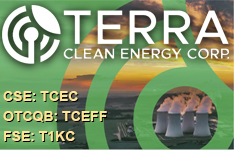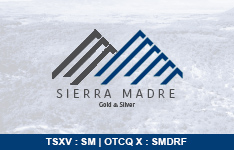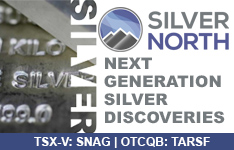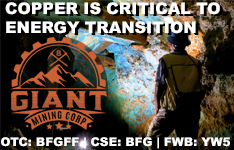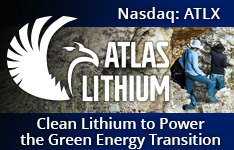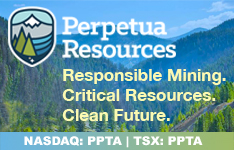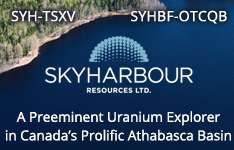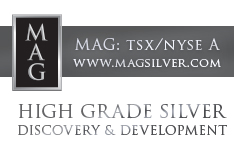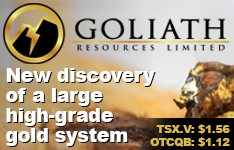Perpetua Resources Corp. (PPTA:TSX; PPTA:NASDAQ) has reported its unaudited financial results for the quarter ended March 31, 2025, and announced a significant regulatory milestone for its flagship Stibnite Gold Project in Idaho. The U.S. Forest Service issued a Final Record of Decision (ROD) approving the Project, which company leadership called the most important development in Perpetua’s history.
President and CEO Jon Cherry noted, “Perpetua Resources began 2025 with the biggest milestone in the company’s history – a favorable Final Record of Decision for the Stibnite Gold Project.” He added in the news release, “In April 2025, our project was selected as a Transparency Project by the White House, which I believe underscores the immense strategic value of our asset to our country.”
The company also completed basic engineering and a cost update for the Stibnite project, executed a procurement contract with Idaho Power for long-lead transmission items, and was added to the Market Vectors Junior Gold Miners Index and the VanEck Junior Gold Miners ETF.
Perpetua Resources is advancing the development of the Stibnite Gold Project, which hosts an estimated 4.8 million ounces of Proven and Probable gold reserves at an average grade of 1.43 grams per tonne, along with 148 million pounds of antimony reserves. The company aims to redevelop the site into one of the largest and lowest-cost open-pit gold mines in the United States while restoring an area impacted by a century of historical mining.
The Stibnite Gold Project is the only known U.S. deposit of antimony, a mineral designated as critical to national defense and clean energy technologies. The project is expected to supply approximately 35% of annual U.S. antimony demand during its initial years of production, based on U.S. Geological Survey data.
Perpetua has been awarded up to US$75 million in federal funding to support permitting, construction readiness, and antimony research. Additionally, the Export-Import Bank of the United States has issued a non-binding letter of interest indicating potential financing of up to US$1.8 billion, contingent upon standard due diligence and authorization processes.
The company concluded Q1 2025 with no lost time incidents or environmental spills.
Gold Sector Gains Momentum
Recent commentary across financial and mining analysts has illustrated the growing strength of the gold sector in 2025, particularly amid macroeconomic volatility and renewed interest in real assets. According to Kristie Batten in an article for Stockhead on May 8, the gold price had climbed above AU$5,200 per ounce, which she noted brought developers "back to prominence on the ASX" after pandemic-related delays. Batten highlighted that easing inflationary pressures and stabilizing labor conditions have allowed projects once considered too costly or risky to move forward, creating an improved environment for gold development.
A day later, on May 9, Morris Hubbartt of Super Gold Signals wrote that the junior gold space had entered what he referred to as the “blastoff” zone, describing the current correction as “tame” and an opportunity to build positions. Hubbartt's analysis pointed to increasing momentum among smaller-cap gold equities, supported by a bullish technical setup and strengthening fundamentals.
On May 11, 321 Gold published a detailed technical breakdown suggesting further bullish trends in gold pricing. The publication indicated a series of upward wave patterns and maintained an active recommendation to “go long gold” with protective strategies in place. The analysis supported the broader narrative of a sector poised to sustain elevated valuations despite short-term corrections.
Finally, Junior Stocks reported on May 12 that gold had surged over 25% year-to-date and quoted mining veteran Rob McEwen, who characterized the current movement as a precursor to a major breakout in gold equities. McEwen stated that while bullion had already rallied, “the real fireworks are yet to come,” attributing the delay in equity response to past investor caution. He added that rising central bank demand, geopolitical risk, and currency instability had all contributed to a “perfect storm” favoring gold.
Analysts Highlight Federal Backing and Strong Upside Potential
On March 25, Mike Kozak of Cantor Fitzgerald noted that Perpetua was among the companies likely to benefit from a new executive order issued by President Donald Trump titled “Immediate Measures to Increase American Mineral Production.” Kozak explained that the order directed federal agencies to expedite permitting, prioritize mineral production on public lands, and expand funding availability under the Defense Production Act. He confirmed that Perpetua was advancing the Stibnite gold-antimony project in Idaho and stated that these measures were intended to support U.S. production of critical minerals, including gold and antimony.
A month later, on April 23, Mike Niehuser of ROTH Capital Partners reported that Perpetua’s Stibnite project had been added to the U.S. Permitting Council’s list of key mineral projects, highlighting its importance to the domestic supply chain. Niehuser wrote, “Though Perpetua received a Final Record of Decision in January 2025, its inclusion on the list demonstrates the [Trump] Administration’s support for the project currently moving through the EXIM (Export-Import Bank of the United States) financing process.” He further stated that this development was integral to ROTH’s investment thesis.
In the same report, Niehuser reiterated ROTH Capital’s Buy rating on Perpetua and maintained a US$19 per share price target, which implied a 43% return from the company’s share price at the time of writing. He noted that Perpetua had previously secured approximately US$75 million in federal funding and received a letter of intent from the U.S. EXIM Bank for up to US$1.8 billion in potential debt financing.
Niehuser emphasized that Perpetua’s formal application to EXIM was likely to be reviewed under favorable conditions, writing, “The series of Executive Orders and inclusion on the Permitting Council’s list suggest that EXIM should fully review Perpetua’s formal application.” He added that upcoming milestones—including the expected Clean Water Act 404 permit and finalization of financing—could serve as short-term catalysts for the company.
Building a Strategic Asset: What’s Ahead for Stibnite
As detailed in its March 2025 investor presentation, Perpetua Resources is positioning the Stibnite Gold Project as a cornerstone of domestic critical mineral supply and low-cost gold production. The company forecasts average gold production of 463,000 ounces annually over the first four years, with an all-in sustaining cost (AISC) of US$435 per ounce, supported by antimony by-product credits.
In financial modeling based on a US$2,100 per ounce gold price, the project’s after-tax net present value (NPV) is estimated at US$1.39 billion with an internal rate of return (IRR) of 15.4% and a 3.2-year payback period. Under spot price assumptions of US$2,900 per ounce gold and US$21.00 per pound antimony, the after-tax NPV increases to US$3.65 billion with a 2.2-year payback.
The company expects to finalize remaining ancillary permits and formalize project financing in the first half of 2025, with a construction decision to follow. Operations are projected to commence in 2028, with concurrent environmental restoration activities extending into the post-mining period.
Perpetua also continues its collaboration with energy storage company Ambri to supply domestically mined antimony for use in Ambri’s long-duration batteries, a key component in renewable energy infrastructure. The supply agreement remains subject to successful permitting and commercial production milestones.
With a strong permitting track record, support from the U.S. government, and a unique position in both the gold and antimony markets, Perpetua Resources aims to advance Stibnite as a strategic U.S. mining project in a secure and resource-rich jurisdiction.
Ownership and Share Structure
Streetwise Ownership Overview*
Perpetua Resources Corp. (PPTA:TSX; PPTA:NASDAQ)
According to Refinitiv, management and insiders own approximately 0.50% of Perpetua.
Institutions own about 63.52%. Top institutional shareholders include Paulson & Co. with 35.08%, Sun Valley Gold LLC with 4.2%, Sprott Asset Management LP with 4.16%, Kopernik Global Investors LLC with 3.05% and Sprott Asset Management USA Inc. with 3.41%. The rest is in retail.
Perpetua has 70.61 million (70.61M) outstanding shares and 69.97M free float traded shares. Its market cap is CA$937.13M. Its 52-week range is CA$6.80–CA$19.72 per share.
| Want to be the first to know about interesting Gold investment ideas? Sign up to receive the FREE Streetwise Reports' newsletter. | Subscribe |
Important Disclosures:
- Perpetua Resources is a billboard sponsor of Streetwise Reports and pays SWR a monthly sponsorship fee between US$4,000 and US$5,000.
- James Guttman wrote this article for Streetwise Reports LLC and provides services to Streetwise Reports as an employee.
- This article does not constitute investment advice and is not a solicitation for any investment. Streetwise Reports does not render general or specific investment advice and the information on Streetwise Reports should not be considered a recommendation to buy or sell any security. Each reader is encouraged to consult with his or her personal financial adviser and perform their own comprehensive investment research. By opening this page, each reader accepts and agrees to Streetwise Reports' terms of use and full legal disclaimer. Streetwise Reports does not endorse or recommend the business, products, services or securities of any company.
For additional disclosures, please click here.










